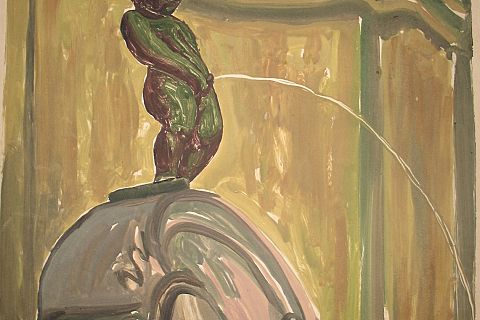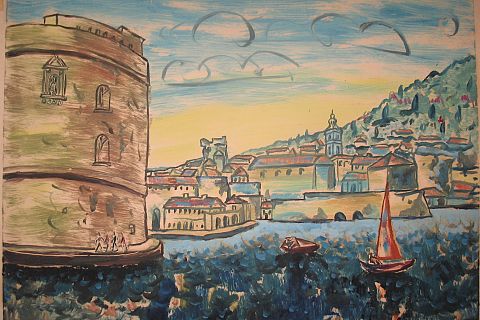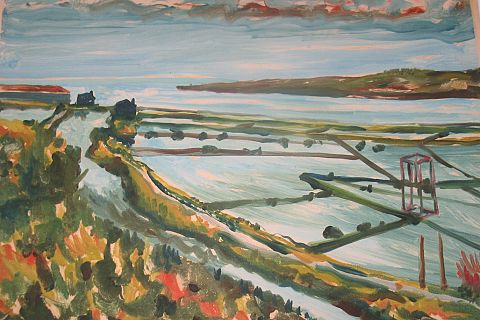Do you know? ....Monotypy and painter Miha Maleš
The monotypy appeared as early as the 17th century in the work of the Italian painter and graphic artist Giovanni Benedetto Castiglione (1609-1664). It gained a wide range in the late 19th and 20th centuries, with great authors such as Edgar Degas, who, with his enthusiasm for the rediscovered graphic technique, also impressed his contemporaries Camille Pissarro and Paul Gauguin, Pablo Picasso, Georges Roualt and Henry Matiss. to mention only the most recognizable names of modern art.
The monotypy was created for the artist Miha Maleš and his characteristic play, for the restless spirit, which is always looking for new ways of artistic expression and experimentation, for the creator who is committed to the line and at the same time loves color. It is connected with painting by the use of colour, prints and uniqueness, the uniqueness of the print, and the graphic work means the way of working or the final creation created by the print. For a restless creative spirit eternally playful in line and colour, the technique of monotypy or the process itself brings spontaneity (a fairly quick design to keep the paint from drying out without a preliminary sketch) and many unpredictable surprises at the very process of printing, where the original image, applied to a smooth surface (this may be glass, plexi and acrylic glass or smooth metal – they first used copper and later zinc) when turned over to the paper, mirrors.
Another unexpected moment is when we print an image on paper, and there is a difference in the intensity of the colour, depending on the power with which the paper was pressed on the media. The third moment of the unexpected occurs with the use of different colors (ink, oil paints, water colors) in combination with the paper, which can be dry to produce more contrasts, or moist to produce a larger tonal range.
For authors who devote themselves to the graphic technique of monotypy, the main reason for using this technique is the unexpected charm. Of course, the power of spontaneity of the individual, the knowledge of applying the color to the medium and the prints, and the affinity for experimentation are also crucial here – that is why only master masters succeed in this medium.
It can also be your challenge #stayathome
Saša Bučan






